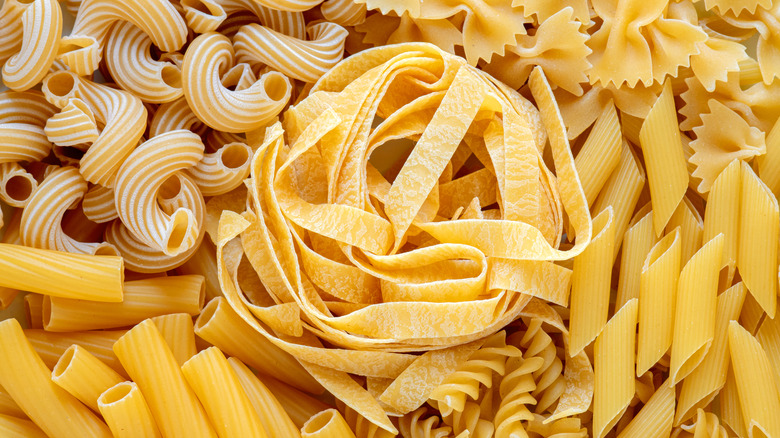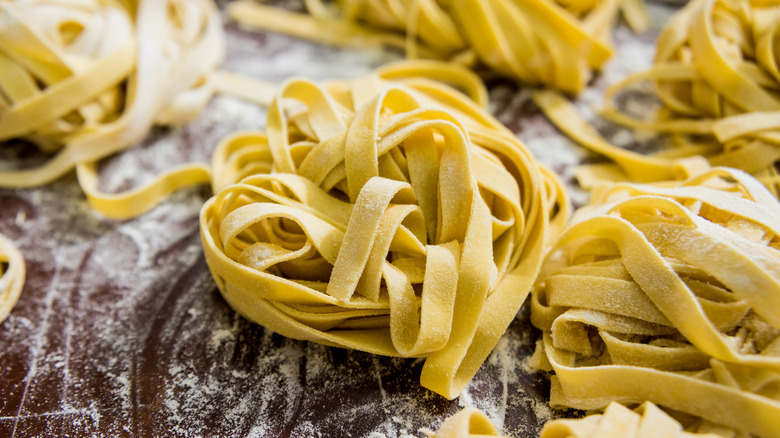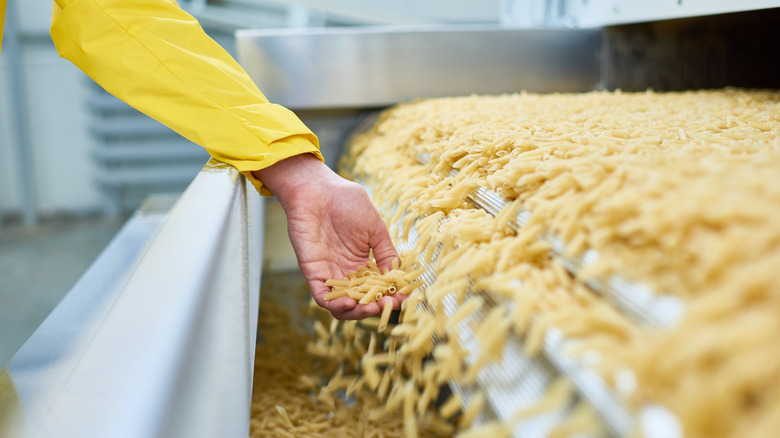Why Are People Blending Pasta Noodles On TikTok?
If you ask a foreign affairs pundit, the biggest TikTok controversy has to do with national security. But if you ask the average user who watches a lot of recipe videos on the app, there's another TikTok issue at play: people are grinding up dried pasta noodles, calling it flour, and using it to make more pasta noodles.
In a whirlwind of a viral 2021 TikTok video, Eitan Bernath breaks a handful of dried spaghetti into a blender with the reckless abandon of a garbage collector, then uses the powdery grinds in place of pasta flour. He forms it into a pile on the counter, drops an egg in its center, rolls it into a sheet of dough, and uses a pasta cutter to slice it into strips. He then cooks it like fresh pasta, takes a bite, and proclaims that it's "not terrible." The internet — and probably every Italian grandma out there — has other opinions.
A noodle from a noodle
After watching dried spaghetti dust turn into "fresh" pasta on TikTok two years after it was posted, celebrity chef Michael Symon, an avid proponent of fresh dough, took to Twitter to express his disdain. "I'd rather have someone hit me with a shovel than watch that again," he wrote. He is certainly not alone. "That video broke me today," wrote one user, who was joined in the comments by a trio of vomiting emojis.
The comment section of the video itself features even more scathing condemnations. "The Italians are coming for you," wrote one user. Others declared that the method, which silently bills itself as a shortcut to fresh pasta, is actually more work. As one user put it, "This is just making pasta with extra steps." We haven't tried it, but considering the textural differences between dry and fresh pasta, we can't imagine ground-up boxed spaghetti compares to traditional flour. Here are all the ways fresh pasta differs from the dried stuff.
Try making it fresh
One of the most contentious parts of TikTok's dried-to-fresh pasta method is the inclusion of the egg. That might be because most commercially dried pasta isn't made with eggs. Rather, it's made from a paste of semolina flour and water that's molded and cut into the spaghetti, linguini, farfalle, orecchiette, and rigatoni that lines grocery shelves. After it's formed, dried pasta is dehydrated over the course of a few days at a low temperature, which means it can last for quite a while in a box.
Fresh pasta goes through quite a different — and, indeed, simpler — process. While it might seem like a task reserved for professionals and experienced home cooks, it's actually a great project for beginners; even those without fancy pasta-making equipment. All it takes is all-purpose flour, eggs, and semolina flour (for dusting).
After dropping the eggs into a well in the center of the flour and incorporating the ingredients into a shaggy dough, knead the mass for few minutes on a floured surface. Once it's formed into a smooth ball, cover it and let it rest for a few hours at room temperature. If you don't have a pasta roller, bust out your rolling pin and work on a floured surface until the dough is very thin. From here, you can cut it into strips and boil it for a couple of minutes. For measurements and more details, here's a recipe.


